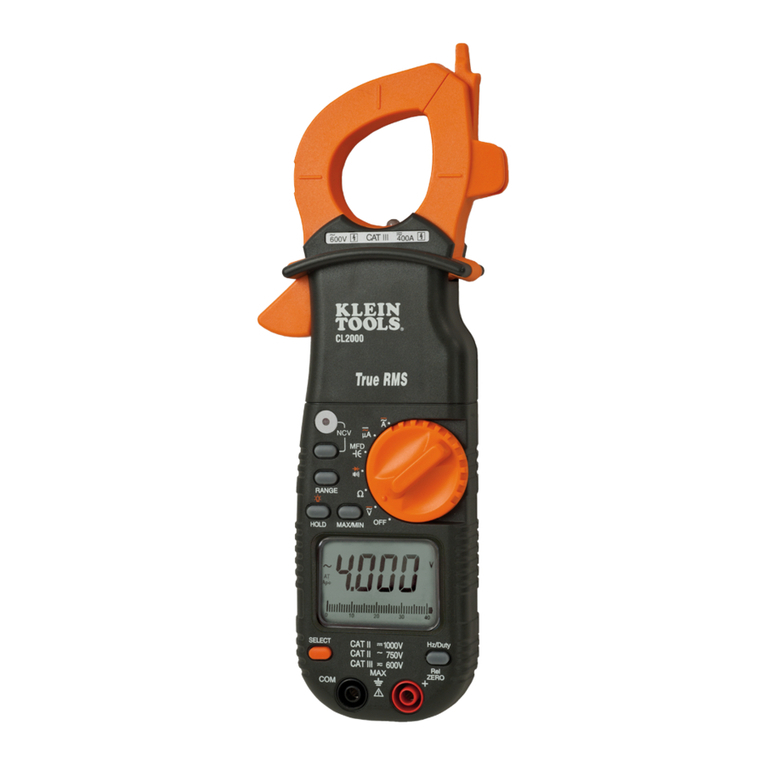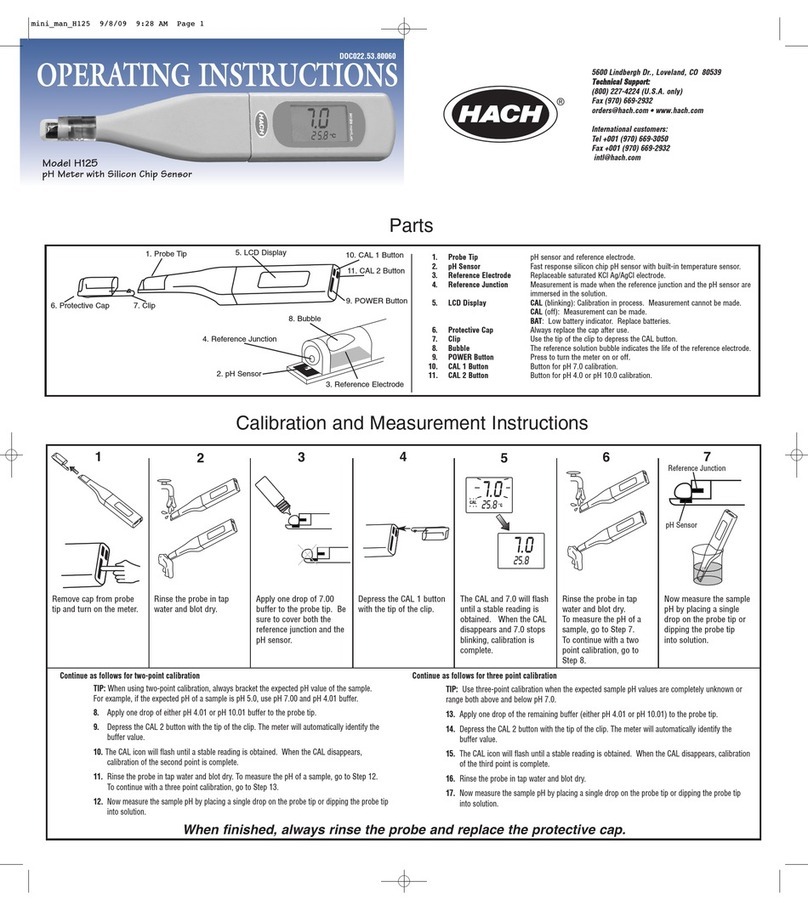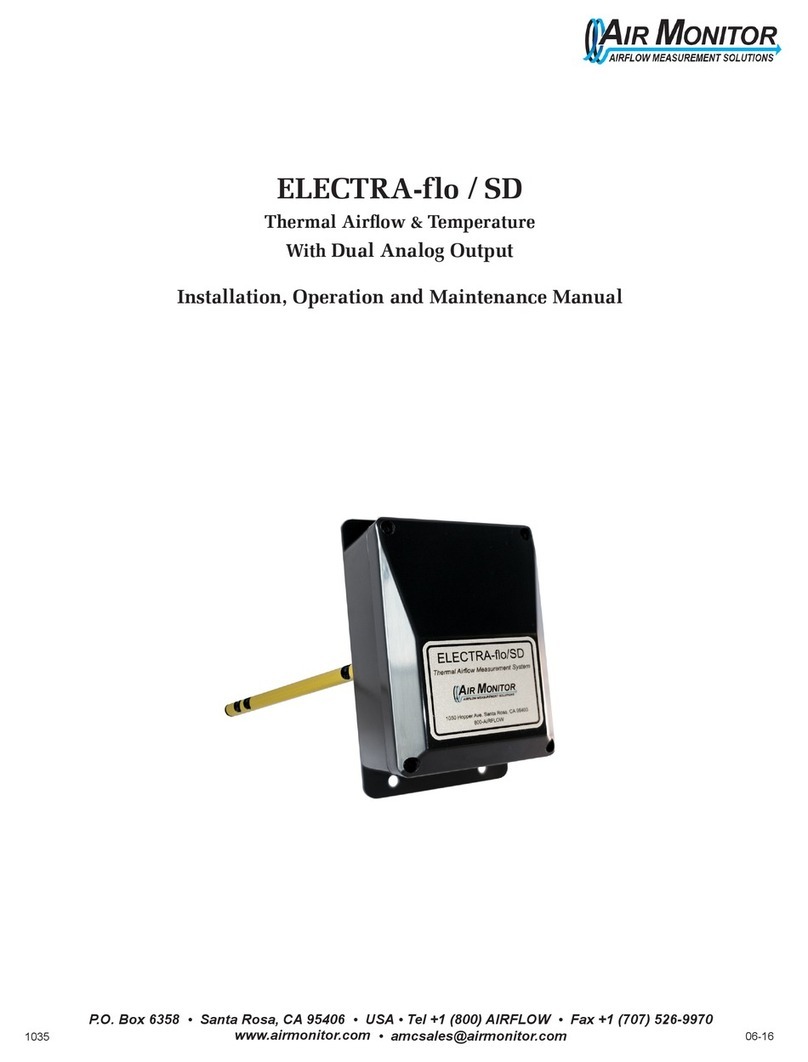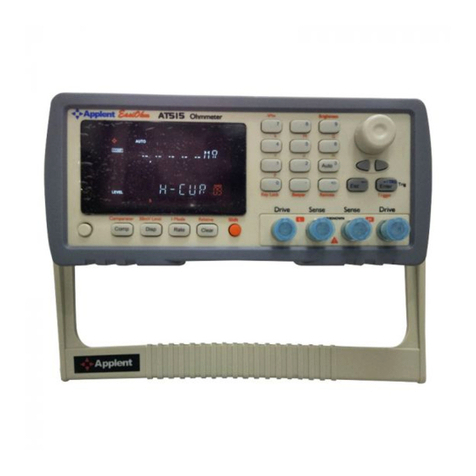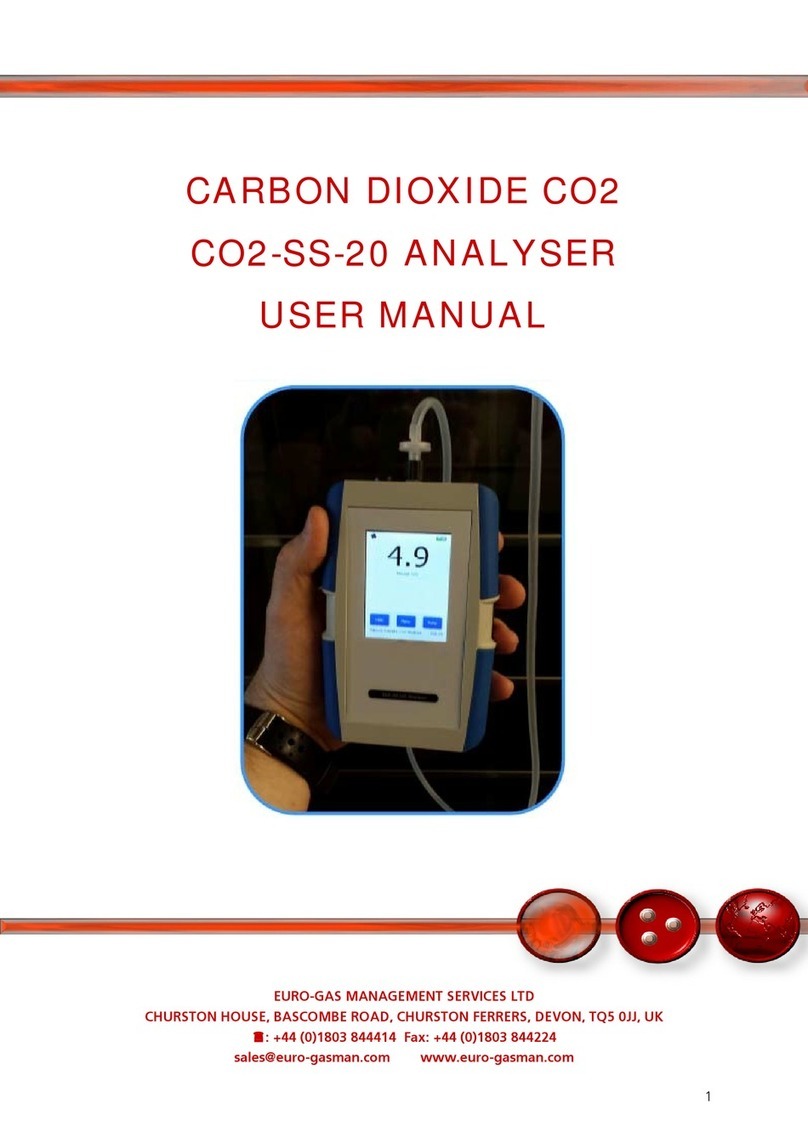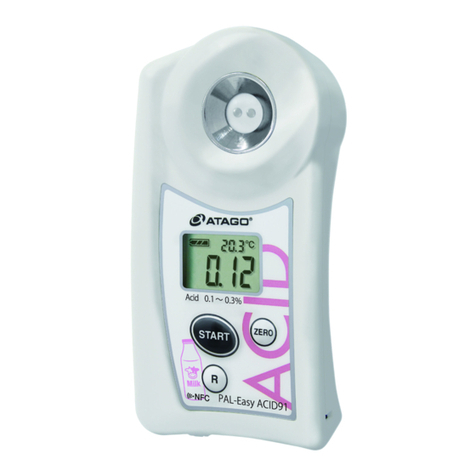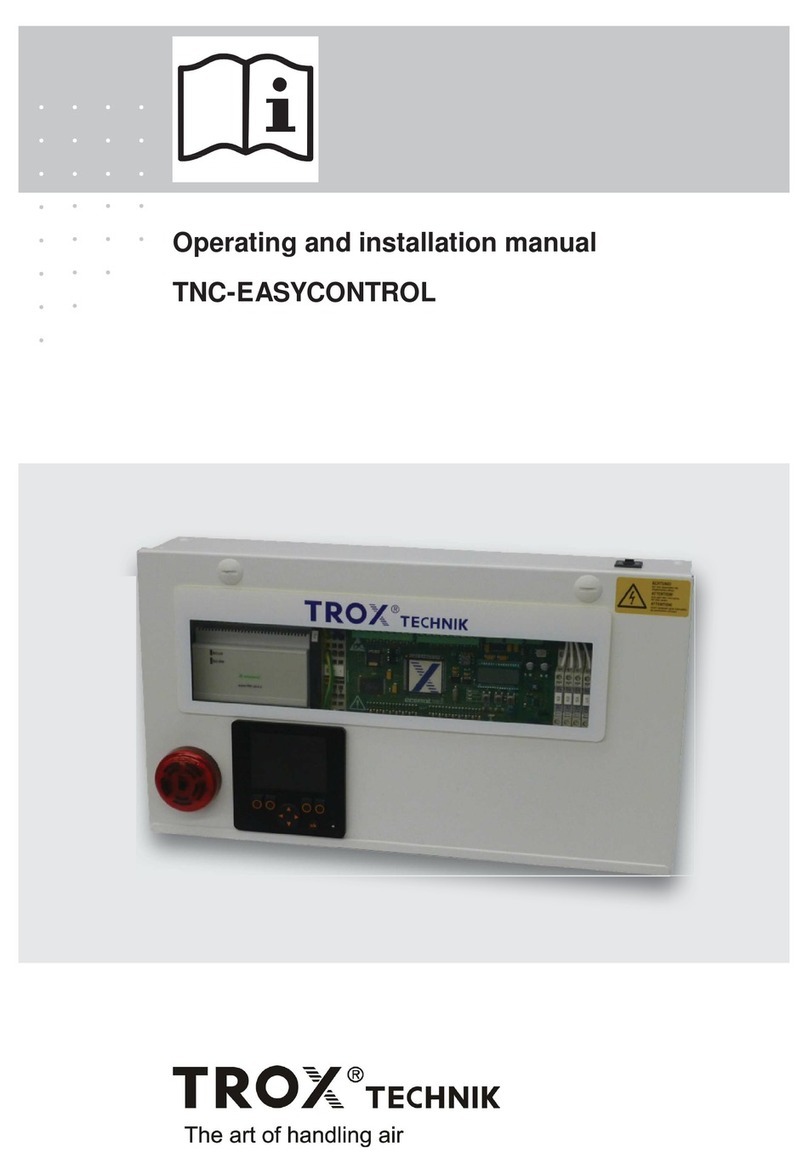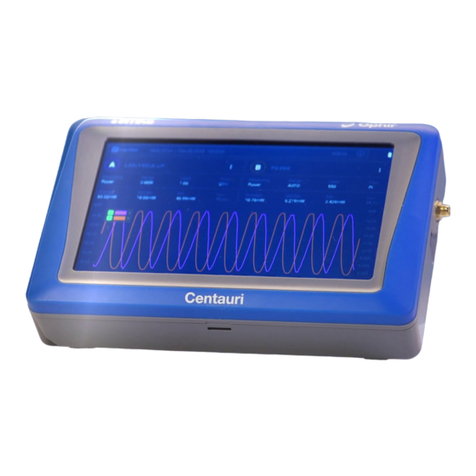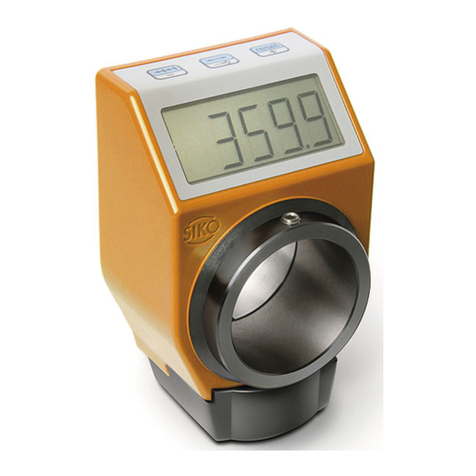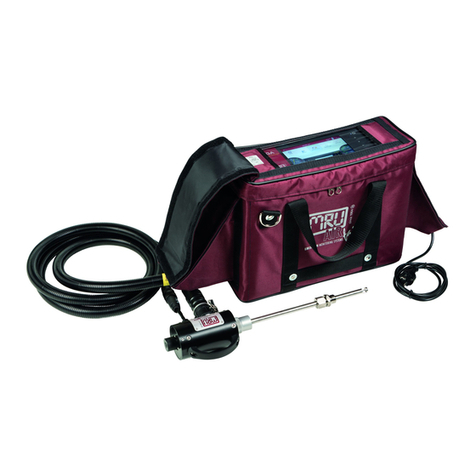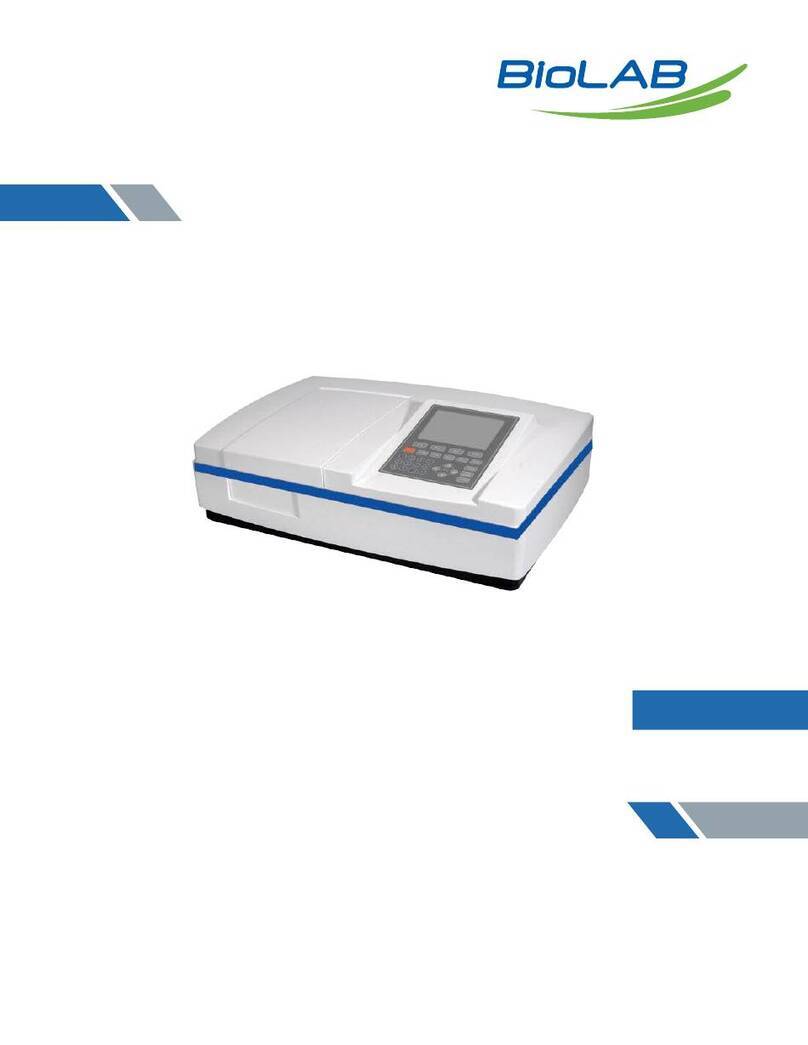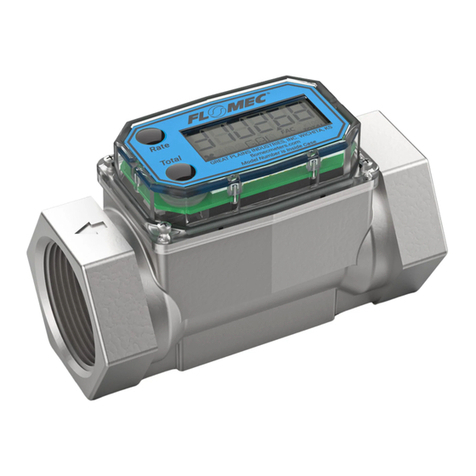Sequoia LISST-Tau User manual

LISST-Tau
High-Precision
Transmissometer
User’s Manual
Version 1.35
November, 2021
2700 Richards Road, Suite 107
Bellevue, WA 98005-4200
Tel: +1 (855) 753-3313
Store Software
USB Card Here

This page intentionally blank.

LISST-Tau User’s Manual Page iii
LISST-Tau High-Precision Transmissometer
Technical assistance
For technical assistance please contact your local Distributor or Sequoia. Please be
sure to include the instrument serial number with any correspondence.
Warranty
See Sequoia Scientific’s standard warranty terms at
www.sequoiasci.com/support/warranty
Sequoia Scientific, Inc. contact information:
Telephone: +1 (855) 753-3313
Email: [email protected]

This page intentionally blank.

LISST-Tau User’s Manual Table of Contents Page v
Table of Contents
I. INTRODUCTION AND TUTORIAL.........................................................................................1
A. GENERAL DESCRIPTION.........................................................................................................1
B. QUICK START TUTORIAL ........................................................................................................2
II. OPERATION DETAILS...........................................................................................................5
C. STEP BY STEP PROCEDURES.................................................................................................6
1. Installing LISST-Tau Software........................................................................................6
2. Establishing Communication with the LISST-Tau ..........................................................7
3. Using the LISST-Tau software........................................................................................9
4. Cleaning Windows........................................................................................................13
5. Clean-water Baseline Measurement (Calibration)........................................................14
D. INSTRUMENT COMMUNICATION.............................................................................................15
E. SERIAL COMMANDS.............................................................................................................16
F. ANALOG OUTPUT.................................................................................................................20
APPENDIX A: TECHNICAL SPECIFICATIONS...........................................................................21
APPENDIX B: DATA OUTPUT FORMAT.....................................................................................23
APPENDIX C: PARSING SERIAL DATA STRING ......................................................................25
APPENDIX D: ELECTRICAL CONNECTIONS ............................................................................26
APPENDIX E: MEASUREMENT DESCRIPTION .........................................................................27
REVISION HISTORY.....................................................................................................................29

LISST-Tau User’s Manual Table of Contents Page vi
This page intentionally blank.

LISST-Tau User’s Manual Introduction and Tutorial Page 1
I. Introduction and Tutorial
A. General Description
Instrument
Description
The LISST-Tau measures the transmission (and inversely, attenuation)
of light in water, at a single narrow wavelength range centered on either
532 or 650 nm. Its rugged aluminum housing and high-resolution digital
electronics provide outstanding measurement quality in any in-situ
application at depths up to 2000 meters.
LISST-Tau generates a beam of light from an LED, formed by a lens
into a uniform, low-divergence beam. The LED is modulated at 1000
Hz. 532-nm LISST-Tau models also have a spectral filter to control the
spectral bandwidth. A beam splitter and reference detector measure
the beam intensity before it enters the water. On the receiver side, a
lens and pinhole capture all the light arriving at angles less than 1.0
degree. The receiver electronics sample the incoming light at 1000 Hz,
synchronously with the modulation of the LED source, rejecting light
from solar background or other sources.
A digital controller receives the digitized signals and applies appropriate
calibration factors to generate the final transmission and attenuation
values. The processing includes applying corrections for the small
residual effects of temperature on the measurements. Factory
calibration of every LISST-Tau includes measuring its response across
the full temperature range.
The controller transmits digital data, once per second, via its RS-232
serial interface at 19200 baud. The digital data stream includes
calibrated, temperature-corrected transmission and beam attenuation,
as well as raw signal values, temperature, etc. LISST-Tau also
produces an analog voltage proportional to transmission, for
compatibility with any analog-input CTD or logging system.
Included
Accessories
The LISST-Tau is shipped pre-calibrated and tested in a Pelican ship
case. Included with the instrument are a USB power and
communication cable, instrument stands, User’s Manual and USB card
with software. The supplied USB cable provides both power and
communication for the LISST-Tau, when used with any PC or tablet
running Microsoft Windows.
The LISST-Tau Windows application communicates with the
instrument, displays and records data, and allows simple checking of
operation before deployment. The software provides real-time display
of transmission or beam attenuation, and a function for recording the
clean-water baseline.

LISST-Tau User’s Manual Introduction and Tutorial Page 2
B. Quick Start Tutorial
Contents of
Shipping Case
Let us assume that you are opening the
LISST-Tau shipping case for the first time.
Inside you will find the following:
•LISST-Tau instrument,
•User’s Manual,
•USB Communications and Power cable,
USB memory card (credit card size) with
the software.
1: Remove
Instrument from
Shipping Case
WARNING: The LISST-Tau can easily roll from a table or other hard,
flat surface. Place it on something soft, such as a towel, or position it
where it will be blocked from rolling. Connecting the cable will also
reduce the chances of rolling.
2: Attach
Communication
and Power Cable
Remove the Communications cable from the ship case. Remove the
dummy plug (cap) from the underwater connector on the LISST-Tau.
Connect the cable to the LISST-Tau, being careful to match the
orientations of the connectors. Plug the USB cable into the computer.
Please note that USB drivers may automatically install the first time the
USB cable is plugged into the computer. If the driver installed
correctly, you should see the green light on the USB cable blinking.
For more information on establishing and troubleshooting
communication with the LISST-Tau see Instrument Communication on
page 15.
Once the cable is operating properly, you should be able to place a
piece of paper in the path of the LISST-Tau and see the green (532
nm) or red (650 nm) beam.
3: Install LISST-
Tau Software
A USB memory card (the size of a credit card) is
included with the instrument. The card contains
the LISST-Tau software, and digital copies of
this manual and other support files. Flip open
the memory card’s USB connector and insert it
in a USB port on your PC to install the software.
The software requires Microsoft Windows 7 or later (it is not
compatible with macOS or Linux).
On the memory card you will find the ‘Install_LISST-Tau_VX_X.exe.’
Double click the installer executable to begin installing the software.
Follow the onscreen instructions and the installer will transfer the
necessary files to your computer and place a shortcut on your desktop

LISST-Tau User’s Manual Introduction and Tutorial Page 3
and start menu. Do not remove the memory card from your computer
until the installation is complete.
4: Start LISST-
Tau Application
and Establish
Communication
with the LISST-
Tau
Start the LISST-Tau software by selecting the shortcut the installer
placed on your desktop. Upon starting the LISST-Tau software will
attempt to automatically detect a serial port that is connected to a
LISST-Tau.
If a port is not automatically detected when the program starts or if you
have multiple LISST-Tau instruments connected to the PC you can
manually select the serial port by clicking on the Settings icon (Gears)
in the lower right corner of the window and choosing Communications
Settings. The short cut to Communications Settings is Ctrl-R. Uncheck
the Automatically locate instrument port and select from the list of
available ports in the drop-down list. It is possible to open multiple
copies of the LISST-Tau software to simultaneously communicate with
multiple instruments.
5: Verify
Operation
After connecting to the LISST-Tau, the software begins displaying the
beam attenuation, updated every second. You can also switch the
display to show transmission rather than attenuation. If the instrument
is in air, the beam attenuation may be negative, or the transmission
greater than 100%. These readings would be nonsensical in water, but
are normal in air, since air has less attenuation than water.
If you block the beam, you should see the transmission drop to near
zero, or the attenuation to go to a very high value.
6: Clean
windows
For a quick cleaning, rinse the windows with lukewarm water and a
mild soap solution (e.g. hand soap, liquid dish soap) and then rinse off
all soap residue with clean, particle free water such as deionized
water, distilled water or bottled purified drinking water. The windows
can also be wiped clean with a soft cloth (e.g. a lens cloth) or glass
cleaner. Do NOT use stronger solvents such as acetone or toluene,
and DO NOT use any abrasive cleaner or wipes. Treat the windows as
you would an expensive camera lens.
More detailed instructions for cleaning the windows can be found on
page 13.

LISST-Tau User’s Manual Introduction and Tutorial Page 4
Step 8: Ready
to Deploy
The LISST-Tau is now ready to deploy. You can disconnect it from the
computer at any time and mount it to the deployment system, or return
it to its carrying case.
Preparing for
transport or
storage
Although the LISST-Tau is robust, handle it with the care you would
any sensitive measuring instrument. Always transport it in its original
shipping case, or a similarly rugged and well-padded container. If it
has been immersed in salt water, thoroughly rinse it with fresh water
before storage. Allow it to dry before closing it in its case. Especially,
clean the windows after use in natural water, so that any residue will
not harden in place on the windows.

LISST-Tau User’s Manual Operation Details Page 5
II. Operation Details
Section
Organization
This section contains detailed instructions for performing various
procedures. These are either in the form of step-by-step instructions or
detailed descriptions of the various aspects of instrument operation
(e.g. command list, instrument mounting and deployment).
General
Precautions
•LISST-Tau is a sensitive optical instrument - please handle it
gently as you would handle an expensive camera.
•Critical alignment may be disturbed if the instrument is subjected
to shock or rough handling.
•Evidence of shock/rough handling will void the warranty.
•Whenever in transit, store the instrument in the provided padded
shipping case.
•Clean and dry the instrument, including the windows, before
storage.

LISST-Tau User’s Manual Operation Details Page 6
C. Step by Step Procedures
1. Installing LISST-Tau Software
The Sequoia-supplied LISST-Tau software for Windows is used to configure the LISST-Tau
and downloading data.
STEP
ACTION
RESULT
1
•The LISST-Tau comes with a USB memory card. Plug
the provided memory card into a USB port on a
computer running Microsoft Windows 7 or later.
Locate the ‘Install_LISST-Tau_V1_4.exe’executable
on the memory card.
Installer was found on
LISST-Tau memory
card
2
•Double click the ‘Install_LISST-Tau_V1_4.exe’
program and follow the onscreen instructions. The
installer will transfer the necessary files to your
computer and place a shortcut on your desktop and
start menu. Do not remove the memory card from your
computer until the installation is fully completed.
If you wish to uninstall the LISST-Tau software, nagivate
to the Apps & Features section of the Windows Settings
page. Or navigate to Add/Remove Programs from the
Control Panel page. Find the entry for the the LISST-Tau
program and select Uninstall.
Installation of software
is complete

LISST-Tau User’s Manual Operation Details Page 7
2. Establishing Communication with the LISST-Tau
Establish communication with LISST-Tau using the supplied software and USB cable.
Communicating with the LISST-Tau via the provided software should be automatic. Should
there be a problem you can use these step-by-step instructions to troubleshoot the problem.
STEP
ACTION
RESULT
1
•If the software is open, close the program, then plug
the USB communication cable to the LISST-Tau and
to a USB port on your computer.
LISST-Tau will be
powered on
2
•After plugging the USB cable into your computer, the
drivers for the USB to serial converter should install
automatically. You should see a notification on the
task bar that drivers are being installed. If you are
unsure if the drivers installed you can install the
drivers manually by running ‘CDM USB Drivers.exe’
located on the memory card that came with your
instrument.
Computer is now set up
to communicate with
the LISST-Tau
3
•After the driver installation is compete, open the
LISST-Tau software.
LISST-Tau software
appears onscreen
4
•The LISST-Tau software will automatically search the
available COM ports until it is able to communicate
with a LISST-Tau. The serial port that is being used
will be shown in the lower left of the screen.
•To manually selected a different COMM port, click on
the Settings icon (Gears) in the lower right corner of
the window and choose Communications Settings.
The short cut to Communications Settings is Ctrl-R.
•Uncheck the Automatically locate instrument port
checkbox and select from the list of available ports in
the drop-down list.
•If you have trouble finding the right port, open the
Device Manger on your computer. Unplug and then re-
plug the USB cable into your computer. The port that
appears in the Device Manger when you plug in the
USB cable is the port you need to select in the LISST-
Tau software. If no port appears, go back to step 2
and reinstall the USB drivers.
Software will be
configured to connect to
the LISST-Tau
5
•The data from the LISST-Tau should now be
displayed on the screen at a rate of once per second.
LISST-Tau and
software are now
communicating

LISST-Tau User’s Manual Operation Details Page 8
6
•If using an alternate software or instrumentation to
communicate with the LISST-Tau make sure that the
serial port settings are set to the following:
oBaud Rate: 19200
o8 Bits, no parity, 1 stop bit
For example code for parsing the serial data string that is
output by the instrument, see Appendix C: Parsing Serial
Data String on page 25.

LISST-Tau User’s Manual Operation Details Page 9
3. Using the LISST-Tau software
Introduction
The LISST-Tau software is a simple tool used for:
1. Viewing Data
2. Saving data to the computer in a text file
3. Configuring the instrument (setting the clock, measure clean-
water baseline, etc.)
Viewing Data
After connecting the LISST-Tau instrument (also see Instrument
Communication on page 15), data will automatically be displayed to the
screen. The Type of data displayed, beam attenuation or optical
transmission, can be selected using radio buttons the left side of the
window. The most recent value is displayed as a number in the upper
left of the window. The last 15 minutes of data will be displayed in the
strip chart.
In the ‘Plot Controls’ group box, you can customize the scale of the
current plot, clear out the existing data, or turn off plotting all together.
Turning off the plotting option may be useful if computer resources are
limited.
Saving Data
Data can be saved to a text file by selecting the ‘Start Logging’ button.
You will be prompted for a location to save the data. After selecting a
location and filename, data will be continually saved to this file until
‘Stop Logging’ is selected or the program is closed. The plot color will
change to green, indicating this data was saved to a file.

LISST-Tau User’s Manual Operation Details Page 10
Configuring
the Instrument
The LISST-Tau software provides the ability to:
1. Set the clock
2. View calibration information
3. Recalibrate (measure baseline)
4. Access the LISST-Tau command line interface
The clock can be set by selecting the gear icon in the lower right
corner. A context menu will provide you with several options. The set
clock option will sync the clock on the LISST-Tau to the current date
and time on your computer.
General instrument and calibration information can be viewed by
pressing the ‘I’ button next to the calibration date.

LISST-Tau User’s Manual Operation Details Page 11
The instrument can be recalibrated through an automated procedure by
selecting the recalibrate button. See Clean-water Baseline
Measurement (Calibration) on page 14 for more information on this
process. If you proceed with recalibrating the instrument you will be
asked to confirm the new calibration coefficients. The previous
calibration coefficients will be overwritten and are not
recoverable!
The LISST-Tau command line interface can be accessed by selecting
the gear icon in the lower right and selecting ‘Open Terminal’. A serial
terminal window will be opened, and list of LISST-Tau commands will
be displayed to the screen.

LISST-Tau User’s Manual Operation Details Page 12
The ‘File’ and ‘Format’ items in the menu bar offer several options for
formatting the displayed texted and saving or logging the command line
output.

LISST-Tau User’s Manual Operation Details Page 13
4. Cleaning Windows
Accurate measurements of transmission depend directly on the cleanliness of the LISST-
Tau’s windows. Regularly clean the windows according to this procedure.
STEP
ACTION
RESULT
1
•Rinse the windows with clean water to wash away any
large particles.
Windows are ready to
be cleaned.
2
•For best results, wear clean latex or nitrile gloves.
•Cleaning can be done with 90% or greater isopropyl
alcohol and/or a non-foaming detergent (such as
Liquinox). Cleaning with both solutions will provide the
best results; the procedure is the same for both.
•Gather gloves, lens paper, cleaning solution, and
clean water
Cleaning supplies are
ready
3
•While wearing gloves, wet a piece of lens paper with
alcohol or detergent.
•Gently dab the windows with the wetted lens paper.
•A gentle wiping action can be used if the windows are
particle and grit free (be careful not to drag large
particle grains across window surface).
•Use a dry piece of lens paper to wipe away the
cleaner.
•Repeat this procedure if the lens paper appears
visually discolored.
Grease and grit
removed using alcohol
and/or detergent.
•Use a spray bottle of clean water or lens paper wetted
with clean water to wash away any residue from the
alcohol or detergent.
•Dry the windows with a piece of lens paper
•Optionally, a can of compressed air can be used to
blow away any fibers or dust that may have been left
on the window.
Windows are clean and
dry
•Inspect the newly cleaned windows for any remaining
dirt or debris.
•Visual inspection can be facilitated by shining a
flashlight on the window from the opposite side of your
view.
•Repeat the cleaning procedure if the window surface
does not appear totally uniform and slightly reflective;
or if there are visible debris still clinging to the
windows.
Windows are visually
inspected and cleaning
is competed.

LISST-Tau User’s Manual Operation Details Page 14
5. Clean-water Baseline Measurement (Calibration)
The LISST-Tau baseline is measured using very clean water at the factory and may not
need to be measured in the field. However, periodic baseline measurements assure the
highest measurement accuracy, and correct for factors such as scratched windows or rough
handling that can affect the performance of the instrument. The procedure shown below
provides the necessary steps needed to measure a new baseline. Note: Accurate results
require careful work and water free of any particles or dissolved substances, such as
deionized water.
STEP
ACTION
RESULT
1
•The instrument will need to be submerged in the water
used for its baseline, so start by cleaning the entire
exterior of the LISST-Tau.
•Clean the windows as discussed in Cleaning Windows
on page 13. Clean windows are essential for an
accurate baseline measurement.
Windows and
instrument very clean
2
•Fill a clean container with highly filtered, degassed
water. The container must be large enough to fully
submerged the LISST-Tau. It is recommended that the
water be continuously recirculated through a 0.2-
micron filter while monitoring the beam attenuation.
•Monitor the attenuation as the water is filtered and the
temperature is equilibrating. Decreasing attenuation
means the results are improving.
•For best results, clean the windows repeatedly until the
attenuation is the same after each cleaning.
Flow Through
Chamber installed or
clean water container
prepared.
3
•Once a stable value has been obtained press the
Recalibrate button on the LISST-Tau software.
•Averaged values will be obtained and displayed on the
screen. Press Yes to accept the current values and
reset the baseline. Press Cancel to stop the procedure
and not make any changes.
•WARNING: Once re-calibrated the instrument cannot
be returned to the previous calibration.
•See Section 3 for more details on using the LISST-Tau
software.
Values are stable and
re-calibration can
begin
4
•The instrument has been recalibrated and the values
being display will be using the new baseline.
Instrument has been
re-calibrated
Table of contents
Other Sequoia Measuring Instrument manuals
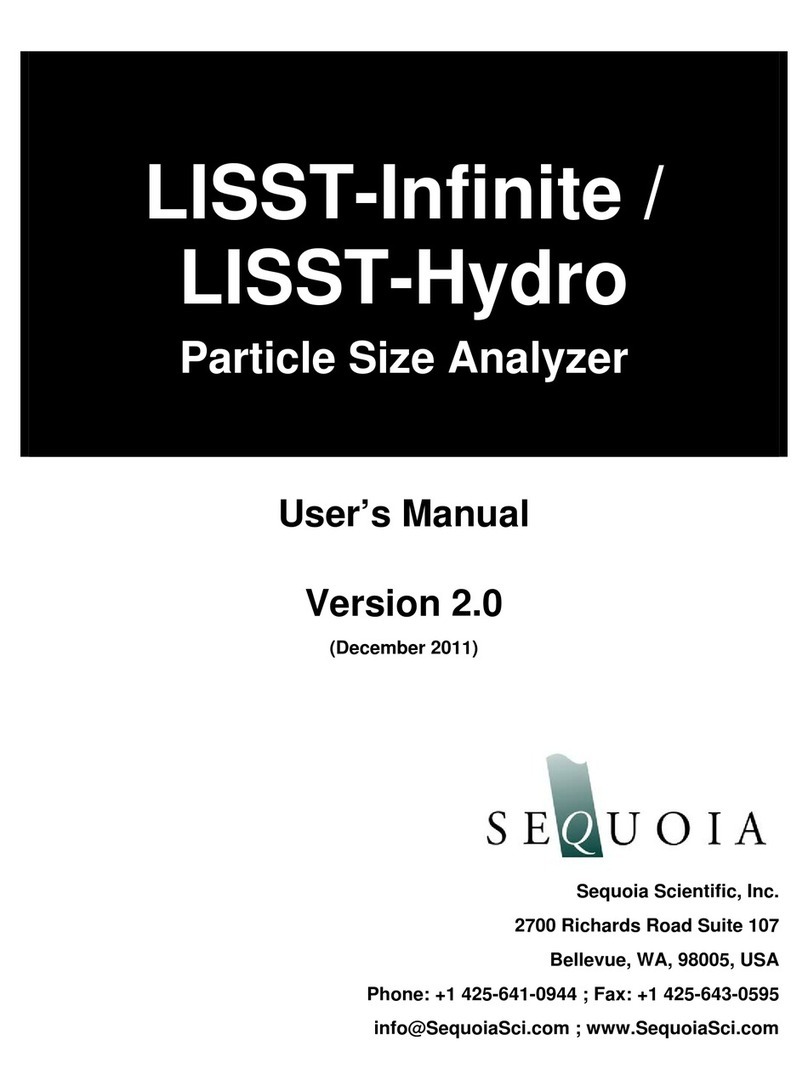
Sequoia
Sequoia LISST-Infinite User manual
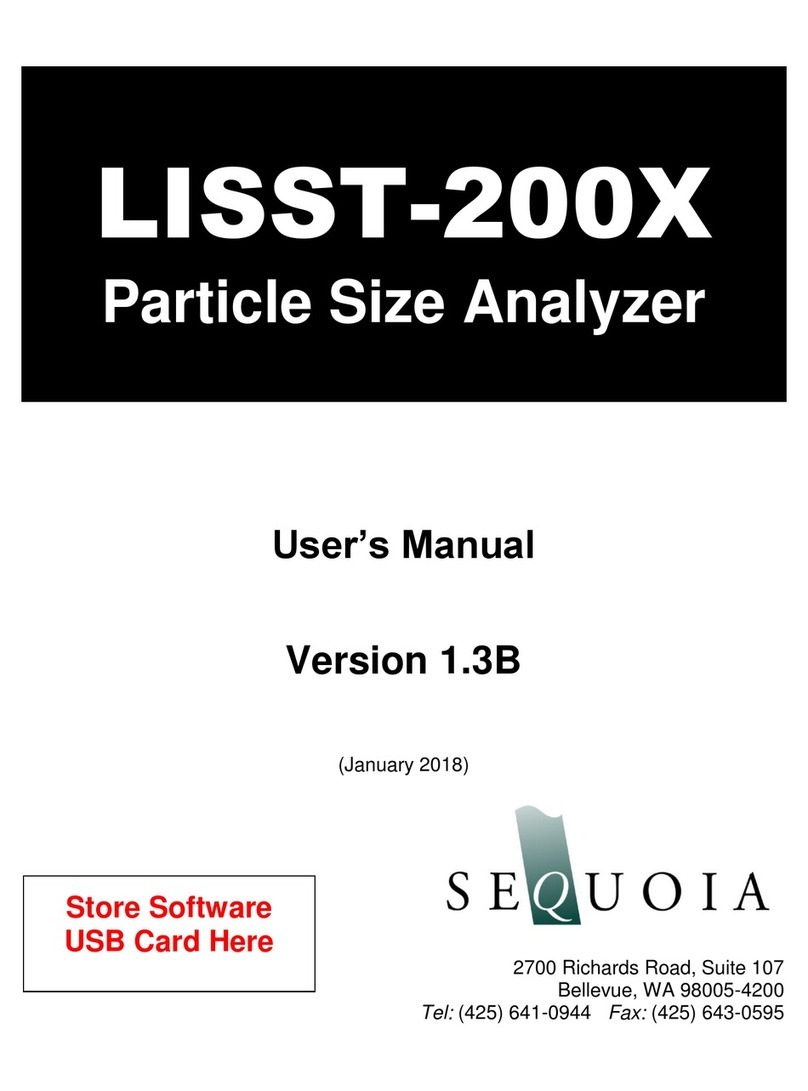
Sequoia
Sequoia LISST-200X User manual
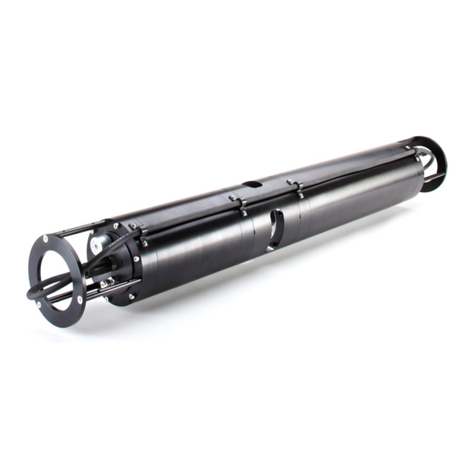
Sequoia
Sequoia LISST-Deep User manual

Sequoia
Sequoia LISST-100X User manual
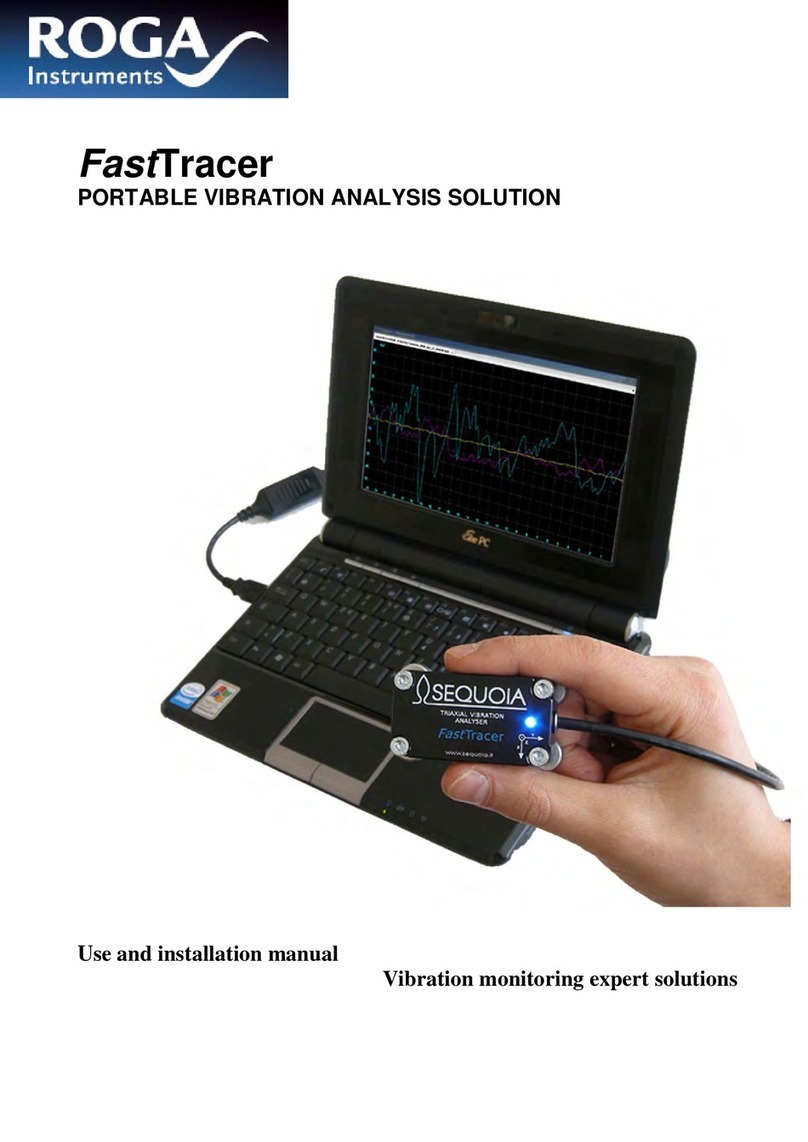
Sequoia
Sequoia FastTracer Technical specifications

Sequoia
Sequoia LISST-200X User manual
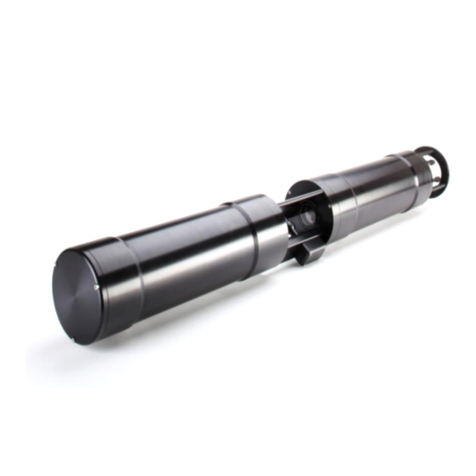
Sequoia
Sequoia LISST-VSF User manual

Sequoia
Sequoia LISST-200X User manual
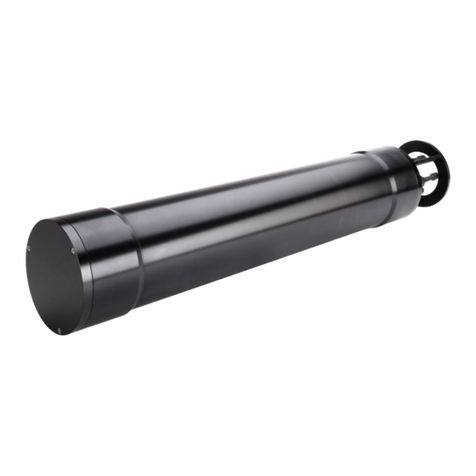
Sequoia
Sequoia LISST-100X User manual

Sequoia
Sequoia LISST-VSF User manual


